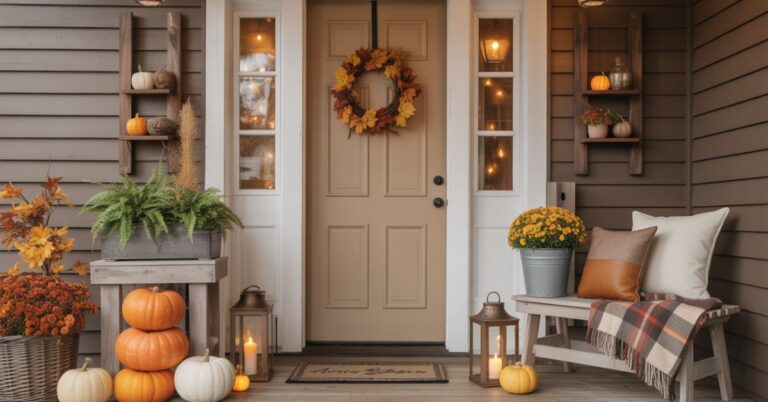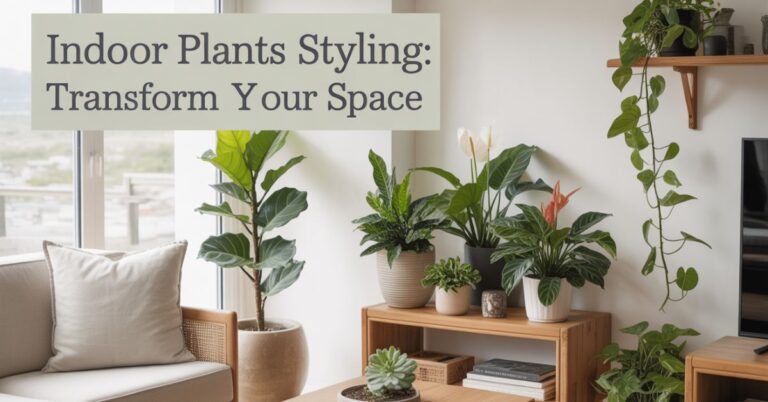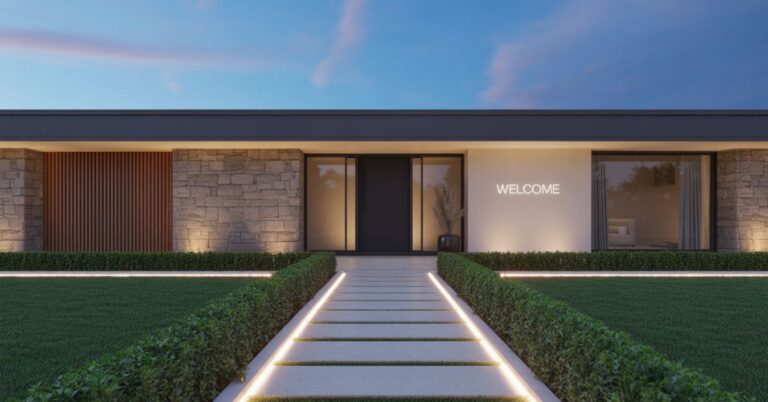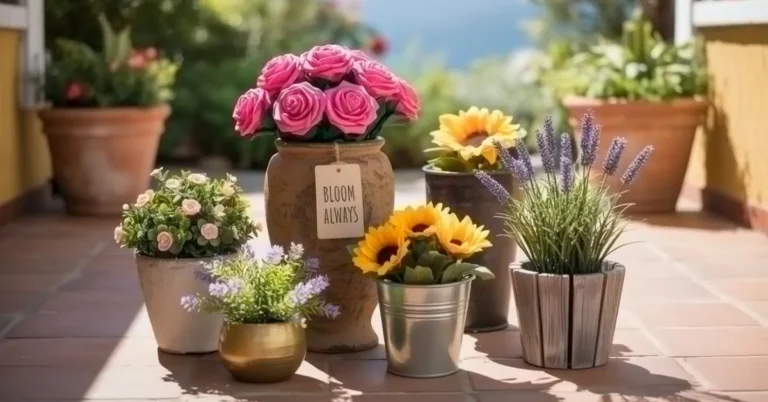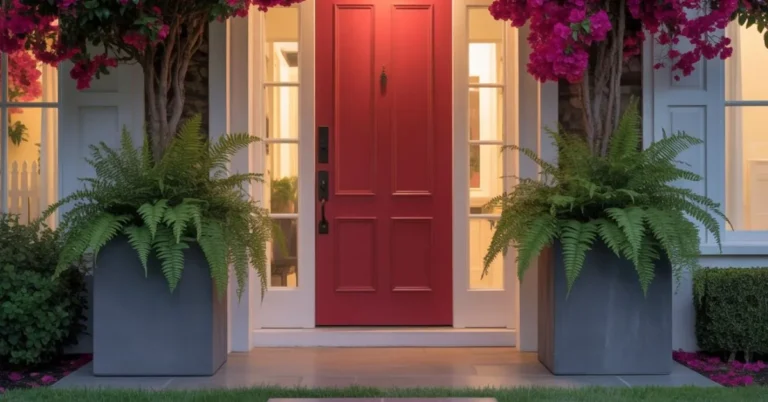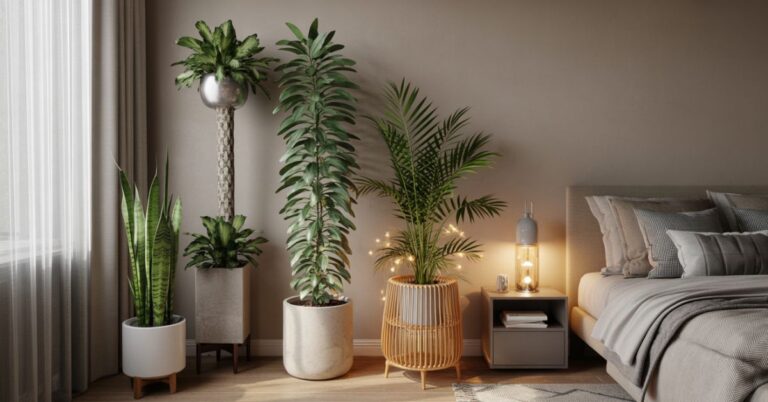25+ Artificial Plants The Complete Guide to Stylish
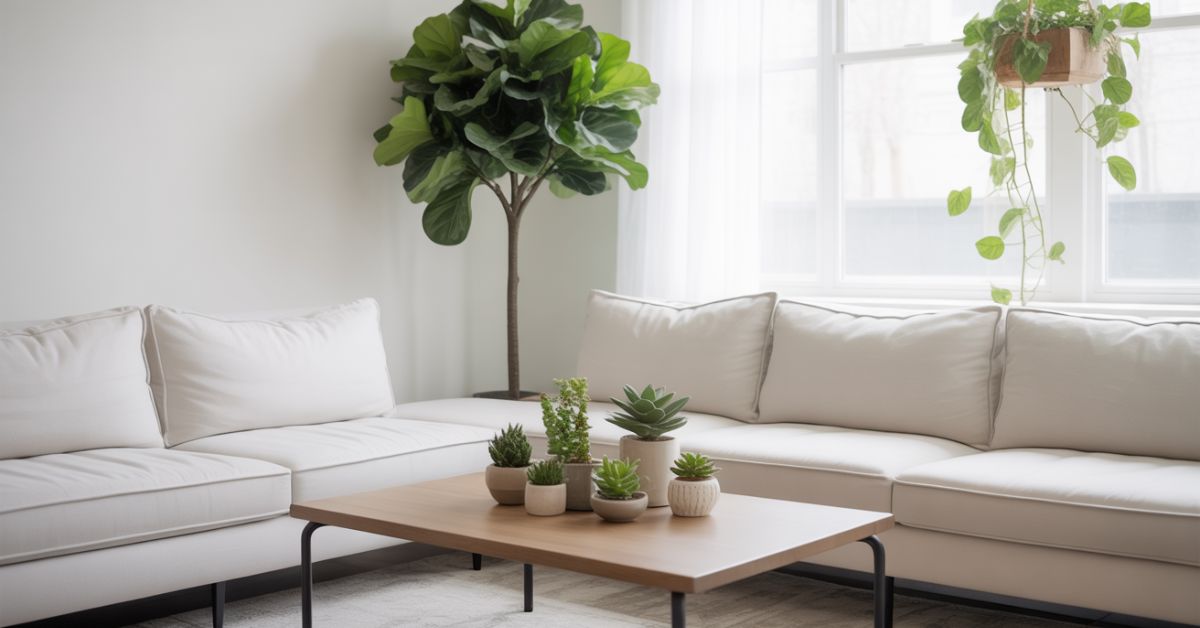
For many, greenery indoors instantly lifts mood, adds warmth, and creates a welcoming atmosphere. But not everyone has the time, space, or sunlight to maintain live plants. Enter artificial plants,a versatile, low-maintenance solution that offers the beauty of nature without the care.
Yet, styling artificial plants can be tricky. Poor placement, cheap-looking materials, or mismatched designs can make them look fake, defeating the purpose. This guide is here to fix that. We’ll cover everything from selecting realistic artificial plants and containers to styling them by room, choosing trending designs, and avoiding common mistakes. By the end, you’ll know how to use artificial plants to elevate your space effortlessly.
What Are Artificial Plants?
Artificial plants are replicas of real plants made from materials like silk, plastic, or polyester. Advanced techniques today allow them to mimic the look, texture, and even color variations of live plants.
They are perfect for:
- Homes with limited natural light
- Busy lifestyles with little time for maintenance
- Temporary spaces or offices where live plants aren’t practical
- Allergy-sensitive environments
Modern artificial plants blur the line between real and faux, making them a viable, stylish alternative to natural greenery.
Why Artificial Plants Are Popular
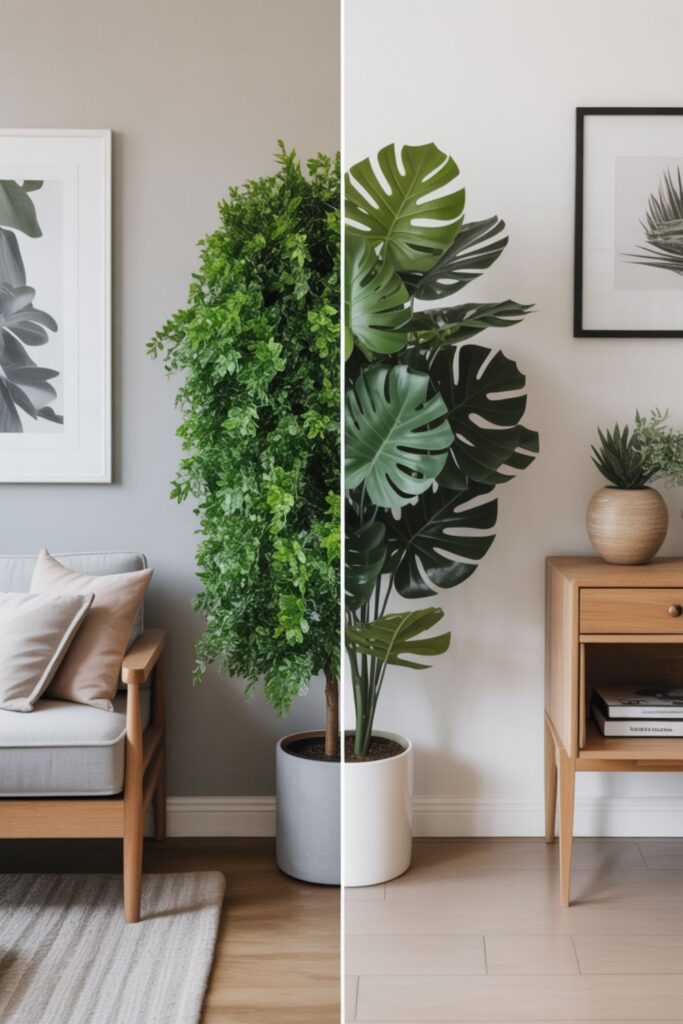
Low Maintenance
Artificial plants don’t need watering, pruning, or sunlight. They stay lush and green year-round, making them perfect for busy households or office environments.
Allergy-Friendly
For people allergic to pollen or plant spores, artificial plants provide the aesthetic benefits of greenery without triggering reactions.
Flexibility in Styling
You can place them anywhere, bathrooms, kitchens, dim corners, or office cubicles, without worrying about light or humidity.
Read More: Indoor Plants Styling to Transforming Your Space
Longevity
High-quality artificial plants last years without wilting, making them cost-effective over time compared to frequently replaced live plants.
How to Style Artificial Plants in Different Rooms
Living Room
- Use large statement artificial trees like Fiddle Leaf Fig or Areca Palm to anchor corners.
- Layer smaller artificial plants on shelves, side tables, and mantels.
- Mix textures—matte leaves with glossy pots for depth.
Bedroom
- Add calming plants like artificial Lavender, Peace Lily, or Snake Plant.
- Place them on nightstands, floating shelves, or hanging baskets to save space.
- Choose muted tones to complement a serene bedroom palette.
Kitchen
- Herbs like faux basil, rosemary, and mint in ceramic pots give a fresh, culinary vibe.
- Place trailing artificial vines above cabinets or along shelves for vertical greenery.
Bathroom
- Artificial ferns, Orchids, or bamboo plants thrive in humid spaces without maintenance.
- Use decorative planters to complement tiles or countertops.
Home Office
- Desk-friendly faux plants like succulents or small palms improve aesthetics and boost focus.
- Position larger artificial trees behind desks or near windows for a natural backdrop in video calls.
Design Principles for Styling Artificial Plants
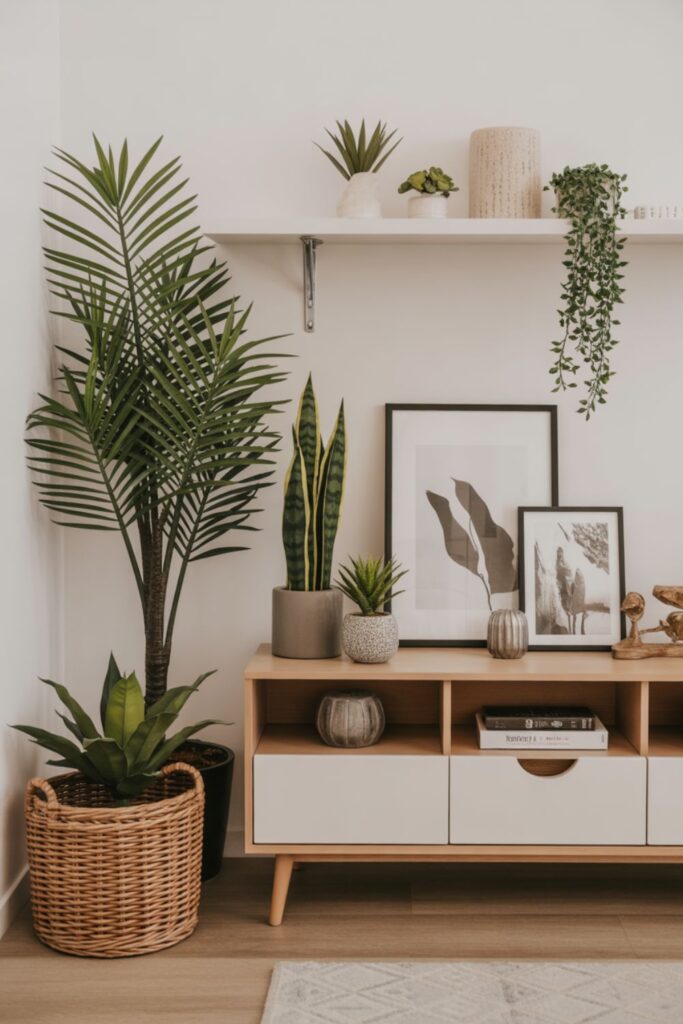
Realism and Texture
Choose plants with realistic leaf shapes, color gradients, and soft stems. Touch and appearance are key for believability.
Scale and Proportion
Match plant size with furniture. Oversized artificial trees work as room anchors; small faux plants are ideal for desks or side tables.
Layering
Combine tall, medium, and small artificial plants for visual depth. Use plant stands or shelves for added dimension.
Color Harmony
Pick plants with natural shades that complement your interior palette. Avoid overly bright greens that can appear fake.
Variety in Containers
Use ceramic, concrete, or metallic pots to match room style. Mix textures, but keep colors consistent for cohesion.
Trending Artificial Plants Styles
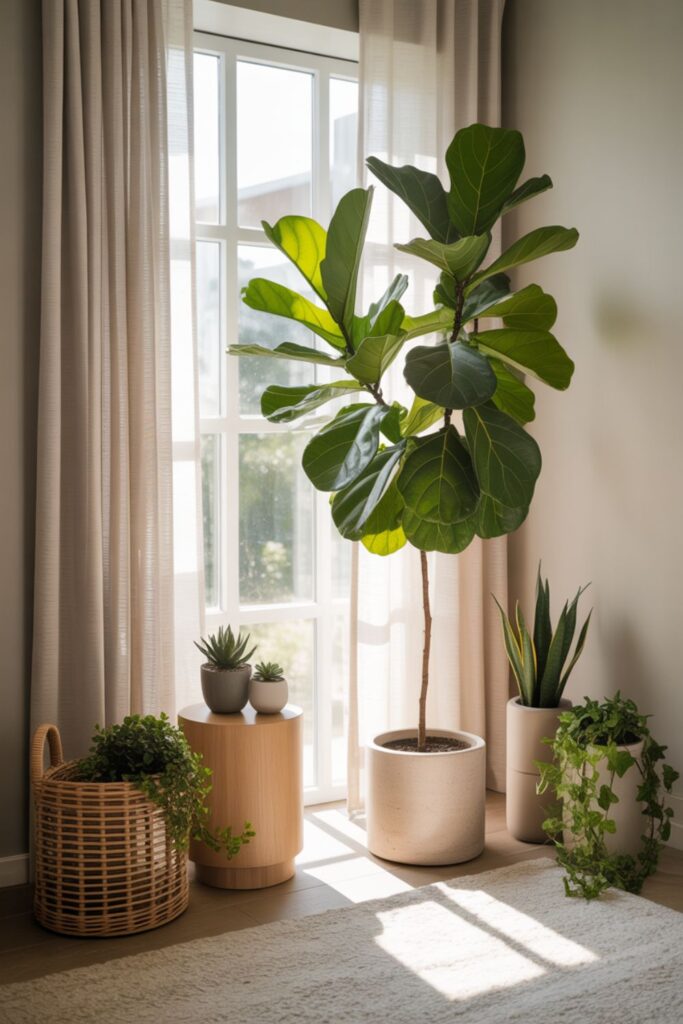
Scandinavian Minimalism
Neutral pots and sleek artificial greenery like Rubber Plants or Monstera fit modern Nordic interiors.
Bohemian Eclectic
Mix faux trailing plants, textured baskets, and vibrant foliage for a cozy, layered look.
Modern Minimalist
One or two statement artificial plants in monochrome or metallic containers create elegance without clutter.
Industrial Chic
Concrete or metal pots with architectural plants like Snake Plant or Dracaena suit exposed brick and industrial furniture.
Read More About: 35+ House Plants Decor For Stylish Indoor Greenery
Mid-Century Modern
Artificial palms or Fiddle Leaf Figs paired with wooden stands echo retro interiors.
Choosing the Right Containers for Artificial Plants
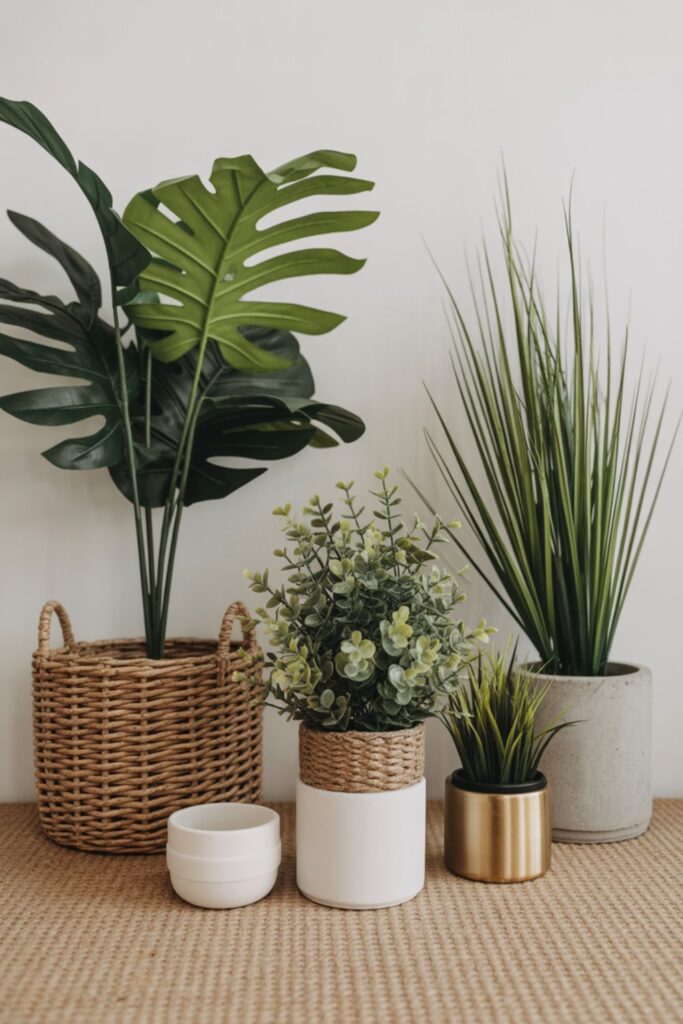
- Ceramic Pots → Classic, versatile, available in glossy or matte finishes.
- Terracotta Pots → Natural earthy appeal, ideal for boho or rustic décor.
- Metallic or Chrome Pots → Perfect for modern, industrial, or glam interiors.
- Concrete Planters → Adds minimalistic, raw appeal to contemporary spaces.
- Hanging Planters → Great for trailing artificial vines in tight spaces.
- Glass Terrariums → Stylish for small faux succulents or cacti.
Artificial Plants by Type
Tall Statement Plants
- Fiddle Leaf Fig
- Areca Palm
- Rubber Plant
Ideal for framing furniture, filling corners, or creating a focal point.
Medium Plants
- Peace Lily
- Dracaena
- Anthurium
Perfect for shelves, consoles, and plant stands.
Small Plants
- Succulents
- Cacti
- Air Plants
Great for desks, coffee tables, and kitchen counters.
Trailing Plants
- Pothos
- Ivy
- String of Pearls
Ideal for hanging baskets or shelves to create cascading greenery.
Common Artificial Plant Styling Mistakes to Avoid
- Unrealistic Choices → Poor quality or overly bright faux plants look fake.
- Wrong Scale → Small plants in large spaces or huge plants in narrow corners appear awkward.
- Overcrowding → Too many artificial plants can make spaces feel cluttered.
- Neglecting Containers → Cheap or mismatched pots reduce style impact.
- Ignoring Placement → Even artificial plants need thoughtful positioning to look natural.
Pro Tips for Perfect Artificial Plant Styling
- Rotate plants occasionally to prevent dust buildup.
- Mix artificial and live plants for a natural blend.
- Use realistic pots, pebbles, or moss to enhance authenticity.
- Layer plants at different heights for depth.
- Match plant texture and container style to your décor theme.
FAQs
Are artificial plants worth buying?
Yes! They’re low-maintenance, long-lasting, allergy-friendly, and versatile for any space or style.
How do I make artificial plants look real?
Use realistic leaf shapes, subtle color variations, high-quality materials, and appropriate containers. Layer plants for depth and place them thoughtfully in natural-looking positions.
Can artificial plants improve interior design?
Absolutely. Well-styled artificial plants add texture, color, and life to spaces, serving as design elements without the maintenance of live plants.
Do artificial plants require any care?
Minimal care, occasional dusting, reshaping leaves, and cleaning containers keeps them looking fresh.
Conclusion
Artificial plants offer the perfect combination of style, convenience, and longevity for modern interiors. They allow anyone, regardless of space or time constraints, to enjoy the calming and aesthetic benefits of greenery.
When styled thoughtfully considering scale, texture, containers, and placement, artificial plants can transform any room into a welcoming, vibrant, and stylish space. Whether you prefer Scandinavian minimalism, Bohemian layers, or industrial chic, there’s a faux plant solution for every design style.
Invest in high-quality artificial plants, mix sizes and types, and use the right containers to achieve a realistic, sophisticated look. With these strategies, your home can enjoy all the beauty of greenery without the work.

